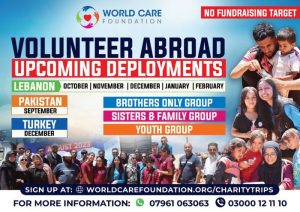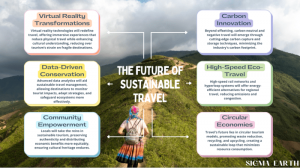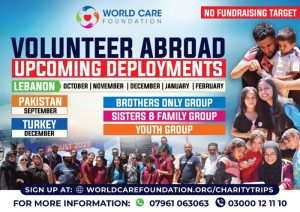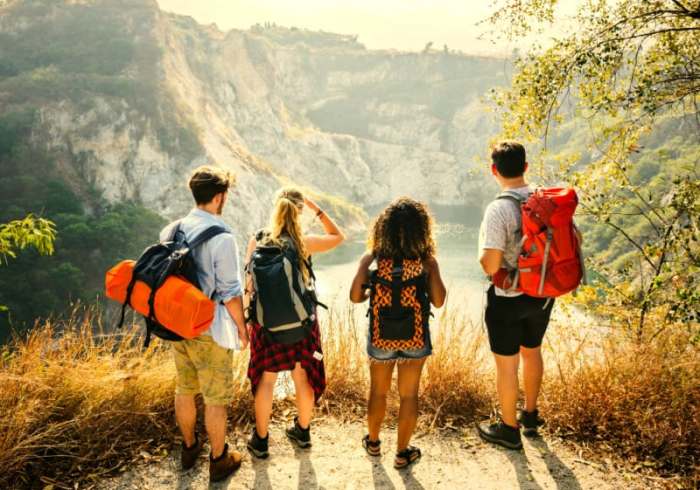
Gap year travel blogs for inspiration offer a wealth of resources for aspiring adventurers. Planning a gap year can feel overwhelming, but these blogs provide invaluable insights into budgeting, itinerary planning, safety precautions, and accommodation options. From backpacking across Southeast Asia to volunteering in South America, countless experiences are documented, helping you craft your ideal journey. This exploration of gap year travel blogs aims to empower you with the knowledge and inspiration needed to make your gap year unforgettable.
Whether you’re a seasoned traveler or a first-timer, the collective wisdom found within gap year travel blogs can significantly enhance your planning process. They provide real-world accounts of diverse travel styles, budget considerations, and cultural encounters, allowing you to learn from others’ successes and challenges. By drawing on this wealth of experience, you can create a personalized gap year adventure that aligns with your interests and aspirations.
Top Gap Year Travel Blog Destinations
Choosing the perfect gap year destination can feel overwhelming, with so many incredible places to explore. This list focuses on destinations offering a blend of popularity, unique experiences, and cultural immersion, considering factors like affordability and ease of access. Remember that the best destination for you will depend on your personal interests and budget.
Top 10 Gap Year Destinations
This table presents ten popular gap year destinations, categorized by their appeal, average cost (a rough estimate, varying greatly based on travel style and duration), and some key activities. Prices are estimates and can fluctuate depending on the season and your spending habits.
| Destination | Reason for Popularity | Average Cost (USD per month) | Things To Do |
|---|---|---|---|
| Southeast Asia (Thailand, Vietnam, Laos) | Incredible affordability, diverse landscapes, rich culture, delicious food, and easy backpacking routes. | 500-1500 | Explore ancient temples, hike through lush jungles, relax on stunning beaches, learn to cook Thai food, and experience vibrant nightlife. |
| South America (Colombia, Peru, Ecuador) | Stunning natural beauty, vibrant culture, fascinating history, and relatively affordable travel. | 600-1800 | Trek the Inca Trail to Machu Picchu, explore the Amazon rainforest, learn to salsa dance, and experience the diverse landscapes from Andes mountains to the Pacific coast. |
| New Zealand | Breathtaking scenery, adventure activities, and a friendly, welcoming atmosphere. | 1500-3000 | Go bungee jumping, white-water rafting, hiking, explore national parks, and witness stunning fjords and glaciers. |
| Australia | Iconic landscapes, diverse wildlife, vibrant cities, and a laid-back lifestyle. | 1800-3500 | Explore the Great Barrier Reef, visit Uluru, work on a farm (working holiday visa required), and experience the diverse cultures of major cities like Sydney and Melbourne. |
| Europe (Western Europe) | Rich history, stunning architecture, diverse cultures, and efficient transportation networks. | 1000-3000 | Visit iconic landmarks like the Eiffel Tower and the Colosseum, explore charming medieval towns, and experience the vibrant city life of capitals like London, Paris, and Rome. |
| Central America (Costa Rica, Guatemala) | Stunning natural beauty, diverse wildlife, adventure activities, and relatively affordable travel. | 700-1500 | Zip-lining through rainforests, surfing, exploring Mayan ruins, and volunteering in local communities. |
| South Africa | Diverse landscapes, incredible wildlife, and a vibrant culture. | 1000-2500 | Go on a safari, visit Table Mountain, explore Cape Town, and learn about the country’s rich history. |
| Japan | Unique culture, advanced technology, delicious food, and stunning landscapes. | 1500-3000 | Visit ancient temples and shrines, experience traditional tea ceremonies, explore bustling cities like Tokyo and Kyoto, and witness the beauty of Mount Fuji. |
| India | Rich history, diverse cultures, spiritual significance, and incredible affordability. | 400-1200 | Visit the Taj Mahal, explore ancient cities like Varanasi and Jaipur, experience yoga and meditation retreats, and immerse yourself in the vibrant street life. |
| Tanzania | Incredible wildlife, stunning landscapes, and opportunities for volunteering and cultural exchange. | 1000-2000 | Go on a safari in the Serengeti, climb Mount Kilimanjaro, visit Zanzibar, and support local communities through volunteering. |
Cultural Immersion Opportunities
Cultural immersion is a key component of a successful gap year. Each destination on the list offers unique opportunities to connect with local communities, learn about different traditions, and broaden your perspective. This can involve taking language classes, participating in local festivals, volunteering, staying with a host family, or simply engaging in everyday conversations with locals. For example, in Southeast Asia, you might learn to cook traditional dishes, participate in a Buddhist ceremony, or volunteer at a local school.
In South America, you might learn to dance salsa, attend a local market, or participate in a community project. The possibilities are endless, and the experiences are invaluable.
Visa Requirements and Necessary Travel Documents
Visa requirements vary greatly depending on your nationality and the destination country. It is crucial to research the specific visa requirements for each country well in advance of your trip. Generally, you will need a valid passport, travel insurance, and possibly a visa. Some countries offer visa-on-arrival options, while others require you to apply for a visa in advance.
It is recommended to check the official website of the embassy or consulate of the country you plan to visit for the most up-to-date information. Failing to obtain the necessary visa can result in significant delays or even deportation. In addition to your passport and visa, ensure you have copies of your flight tickets, travel insurance information, and any other relevant documents.
Budgeting for a Gap Year Trip
Planning a gap year trip requires careful budgeting to ensure a smooth and enjoyable experience. Understanding your spending habits and setting realistic financial goals is crucial for maximizing your travel time without exceeding your financial limits. A well-structured budget will allow you to prioritize your experiences and avoid unexpected financial strain during your journey.
Sample Gap Year Budget Breakdown
A comprehensive budget should encompass all potential expenses. This sample budget provides a framework; adjust it based on your destination, travel style, and duration. Remember that these are estimates and can vary significantly.
- Flights: $1500 – $3000 (depending on destination and booking time). This can vary greatly based on your origin and destination, as well as the time of year you are travelling. Booking flights well in advance, or during off-season, can often result in significant savings.
- Accommodation: $20 – $100 per night (depending on choice of hostels, guesthouses, or hotels). Budgeting for accommodation is significantly impacted by your choice of lodging. Hostels are typically the most affordable option, while hotels are the most expensive. Consider a mix of accommodation types to manage costs.
- Activities: $500 – $2000 (depending on activities chosen). This includes entrance fees to attractions, tours, and other activities. Prioritize free or low-cost activities to keep this cost down.
- Food: $30 – $75 per day (depending on eating habits and location). Eating local cuisine and cooking your own meals whenever possible is a great way to reduce food costs. Avoid eating at tourist traps.
- Transportation (local): $200 – $500 (depending on destination and mode of transportation). This includes local buses, trains, or taxis. Utilizing public transport is generally more affordable than taxis or ride-sharing services.
- Visa & Travel Insurance: $200 – $500 (depending on destination and insurance coverage). Ensure you have adequate travel insurance to cover medical emergencies and other unforeseen circumstances. Visa costs vary significantly by country.
- Miscellaneous: $500 – $1000 (for unexpected expenses and souvenirs). It’s always wise to include a buffer for unexpected expenses.
Finding Affordable Flights and Accommodation
Securing affordable flights and accommodation is key to maximizing your budget.
- Flights: Utilize flight comparison websites (e.g., Skyscanner, Google Flights) to compare prices across various airlines. Be flexible with your travel dates; flying mid-week or during the off-season often results in lower fares. Consider budget airlines, but weigh the potential for added baggage fees.
- Accommodation: Explore budget-friendly options like hostels, guesthouses, Airbnb, or homestays. Websites like Hostelworld and Booking.com offer a wide selection of affordable accommodation choices. Consider staying outside of major city centers for lower prices.
Saving Money While Traveling
Implementing smart strategies can significantly reduce travel expenses.
- Free or Low-Cost Activities: Prioritize free activities like hiking, exploring local parks, visiting free museums (often on specific days), and attending free events. Many cities offer free walking tours, providing a great way to learn about the local culture and history at no cost.
- Food Savings: Cook your own meals whenever possible. Utilize local markets for fresh produce and groceries. Eating at local eateries instead of tourist restaurants is usually more affordable and offers a more authentic culinary experience.
- Transportation Savings: Utilize public transportation whenever feasible. Walking or cycling is a great way to explore a city and save money on transportation. Consider purchasing city passes for unlimited access to public transport.
Gap Year Travel Itineraries
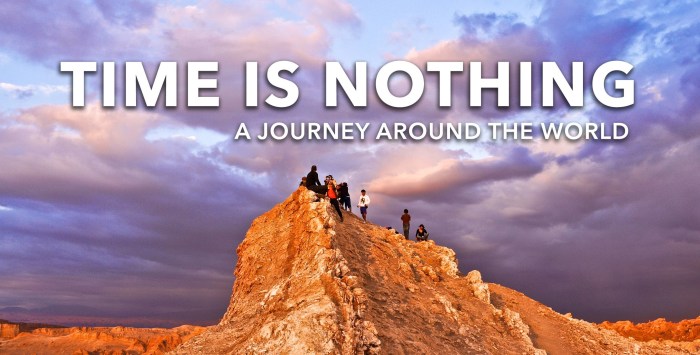
Planning a gap year can feel overwhelming, but breaking it down into manageable itineraries can make the process much simpler. Choosing the right itinerary depends entirely on your personal preferences, budget, and goals for your gap year. Below are three sample itineraries demonstrating different approaches to gap year travel. Remember, these are just starting points; feel free to adapt them to your own interests and resources.
Backpacking Southeast Asia Itinerary
This itinerary focuses on budget travel and experiencing diverse cultures across Southeast Asia. It prioritizes affordability and maximizing experiences within a limited budget.
- Month 1 (Thailand): Bangkok (3 days) – explore temples, markets, and nightlife; Chiang Mai (5 days) – trekking, elephant sanctuaries (ethical ones!), cooking classes; Krabi/Railay Beach (7 days) – rock climbing, island hopping, relaxing on the beach.
- Month 2 (Laos): Luang Prabang (5 days) – serene temples, alms giving ceremony, Kuang Si Falls; Vang Vieng (3 days) – kayaking, tubing, exploring caves; Vientiane (4 days) – exploring the capital, visiting temples and museums.
- Month 3 (Vietnam): Hanoi (4 days) – Old Quarter exploration, street food, Hoan Kiem Lake; Ha Long Bay (2 days) – stunning cruises amongst limestone karsts; Hoi An (5 days) – ancient town, tailor-made clothing, beach relaxation; Ho Chi Minh City (4 days) – bustling city life, exploring markets and war remnants.
Pros: Highly affordable, allows for spontaneity, exposure to diverse cultures and landscapes. Cons: Can be tiring, requires flexibility and adaptability, potentially less comfortable accommodations.
Volunteering in South America Itinerary
This itinerary focuses on contributing to local communities while experiencing a different culture. It prioritizes meaningful experiences and interaction with locals.
- Month 1 (Ecuador): Quito (3 days) – acclimatization, exploring the historic center; Otavalo (3 days) – volunteering at a community project (e.g., teaching English, working on a farm); Cotopaxi National Park (4 days) – hiking and exploring the stunning volcano landscape.
- Month 2 (Peru): Cusco (5 days) – acclimatization, exploring the city, visiting Sacsayhuamán; volunteering in a community near Cusco (15 days) – working on environmental projects or supporting local schools; Machu Picchu (4 days) – exploring the Inca citadel.
- Month 3 (Bolivia): La Paz (3 days) – exploring the high-altitude capital; volunteering in a community project (e.g., working with children, supporting healthcare initiatives) (14 days); Uyuni Salt Flats (4 days) – exploring the surreal salt flats landscape.
Pros: Personally rewarding, contributes to a cause, deep cultural immersion. Cons: Requires research to find reputable organizations, may involve physically demanding work, can be less focused on sightseeing.
Cultural Exploration in Europe Itinerary
This itinerary prioritizes exploring the rich history, art, and culture of Europe. It balances sightseeing with relaxation and allows for a deeper understanding of European history and traditions.
- Month 1 (Italy): Rome (7 days) – exploring ancient ruins, Vatican City, indulging in Italian cuisine; Florence (5 days) – Renaissance art, leather workshops, Tuscan countryside day trip; Venice (4 days) – canals, gondolas, exploring the islands.
- Month 2 (France): Paris (7 days) – iconic landmarks, museums, charming cafes; Nice (4 days) – French Riviera, beaches, exploring the old town; Provence (4 days) – lavender fields, charming villages, wine tasting.
- Month 3 (Spain): Barcelona (5 days) – Gaudi architecture, beaches, vibrant nightlife; Seville (4 days) – flamenco dancing, exploring the Alcázar, tapas; Madrid (5 days) – art museums, Royal Palace, vibrant city life.
Pros: Immersive cultural experiences, exposure to diverse history and art, opportunity for personal growth. Cons: Can be more expensive than backpacking, requires more planning and booking in advance, may feel rushed if trying to see too much.
Cost Comparison
The cost of each itinerary will vary greatly depending on your travel style, accommodation choices, and spending habits. However, we can make some general comparisons. The backpacking itinerary would likely be the cheapest, potentially costing between $2000-$4000 for three months, excluding flights. The volunteering itinerary could be similar in cost if you choose affordable accommodation and utilize free or low-cost volunteer opportunities.
The cultural exploration itinerary in Europe will likely be the most expensive, potentially costing between $6000-$10000 or more for three months, again excluding flights. These are rough estimates and can vary significantly. Careful budgeting and planning are crucial for all three itineraries.
Essential Packing List for a Gap Year
Packing for a gap year is a delicate balance between bringing enough essentials and avoiding an overwhelming amount of luggage. Overpacking leads to unnecessary weight and potential difficulties with transportation. A well-planned packing list, focusing on versatile items and light materials, is crucial for a smooth and enjoyable travel experience. This will allow you to embrace spontaneity and adapt to unexpected situations along the way.
Packing Light and Versatile Clothing
Choosing versatile clothing items is paramount. Opt for neutral-colored clothing that can be mixed and matched to create various outfits. Consider fabrics like merino wool or quick-drying synthetics, which are lightweight, comfortable, and resist odors. Packing multiple items of the same type, like several pairs of versatile pants, is more efficient than many different outfits. A capsule wardrobe approach, built around a limited number of versatile garments, is highly recommended.
This approach reduces the total volume and weight of your luggage, which is beneficial for travel, especially in areas with limited transportation options or where you might be doing a lot of walking.
Essential Packing List
The following table provides a comprehensive packing list, categorized for ease of use. Remember to adjust this based on your specific destinations and planned activities.
| Item | Notes |
|---|---|
| Clothing: Tops (5-7) | Mix of short and long sleeves, quick-drying materials. |
| Clothing: Bottoms (2-3 pairs) | Versatile pants or skirts suitable for various activities. |
| Clothing: Underwear (7-10 pairs) | Quick-drying materials are preferable. |
| Clothing: Socks (10-14 pairs) | Consider merino wool or moisture-wicking socks. |
| Clothing: Jacket (1-2) | Lightweight, waterproof, and windproof jacket is essential. |
| Clothing: Comfortable walking shoes (1 pair) | Broken in before your trip to avoid blisters. |
| Clothing: Sandals or flip-flops (1 pair) | For warmer climates and casual wear. |
| Toiletries: Travel-sized toiletries | Shampoo, conditioner, soap, toothpaste, toothbrush, sunscreen, insect repellent. |
| Toiletries: First-aid kit | Include pain relievers, antiseptic wipes, bandages, and any personal medications. |
| Electronics: Smartphone | Ensure it’s unlocked for international use. |
| Electronics: Portable charger | Essential for staying connected on the go. |
| Electronics: Adapter | Check the voltage requirements of your electronics and bring the appropriate adapter. |
| Electronics: Camera (optional) | Consider a lightweight, durable option. |
| Documents: Passport and visa (if required) | Make copies and store them separately from the originals. |
| Documents: Flight/travel itinerary | Keep both physical and digital copies. |
| Documents: Travel insurance information | Essential for unexpected medical emergencies or trip disruptions. |
| Documents: Credit cards and debit cards | Notify your bank of your travel plans. |
| Documents: Emergency contact information | Keep a list of important contact details readily accessible. |
| Other: Daypack | For carrying essentials during day trips. |
| Other: Reusable water bottle | Stay hydrated and reduce plastic waste. |
| Other: Lock | To secure your luggage and valuables. |
Protecting Valuable Items
Protecting valuables during your gap year is crucial. Avoid displaying expensive jewelry or electronics openly. Utilize money belts or hidden pockets to store cash and important documents. Consider using a travel-sized safe in your accommodation if available. Travel insurance often covers lost or stolen items, so ensure you have comprehensive coverage.
Keeping a detailed record of your belongings, including serial numbers for electronics, can assist with insurance claims. Furthermore, distributing valuables across multiple bags rather than concentrating them in one place reduces the risk of significant loss in case of theft.
Safety and Health Considerations for Gap Year Travelers

Embarking on a gap year is an exciting adventure, but prioritizing safety and health is paramount. Thorough preparation can significantly reduce risks and ensure a smoother, more enjoyable experience. This section Artikels crucial safety and health measures for gap year travelers, both solo and in groups.
Essential Safety Tips for Gap Year Travelers
Safeguarding your well-being during your gap year requires proactive measures. Being aware of your surroundings and taking sensible precautions can prevent many potential problems. The following points highlight key safety practices:
- Personal Security: Always be aware of your surroundings, especially in unfamiliar areas. Avoid walking alone at night, and stick to well-lit and populated streets. Inform someone of your itinerary and check in regularly. Keep valuables secure and avoid displaying expensive jewelry or electronics.
- Health Precautions: Practice good hygiene, including regular handwashing. Be mindful of food and water safety; avoid consuming uncooked or unwashed food, and drink bottled or purified water. Learn basic first aid and carry a well-stocked first-aid kit.
- Emergency Preparedness: Before you leave, research local emergency services and make note of important contact numbers. Carry a copy of your passport and other essential documents, ideally in a separate location from the originals. Consider purchasing travel insurance that covers medical emergencies and evacuations.
- Transportation Safety: When using public transportation, be vigilant about your belongings. Avoid hitchhiking and use reputable taxi or ride-sharing services. If renting a vehicle, ensure you have the appropriate driving permit and insurance.
- Cultural Sensitivity: Research local customs and traditions to avoid unintentional offense. Be respectful of local laws and regulations. Learning a few basic phrases in the local language can also enhance your experience and demonstrate respect.
Necessary Vaccinations and Health Insurance Options
Appropriate vaccinations and comprehensive travel insurance are vital for gap year travelers. Consult your doctor well in advance of your departure to discuss necessary vaccinations based on your itinerary. Some vaccinations require multiple doses, necessitating early planning.
Regarding health insurance, a robust travel insurance policy is strongly recommended. It should cover medical emergencies, evacuation, repatriation, and lost or stolen belongings. Consider the level of coverage you need based on your travel plans and the countries you will visit. Some policies offer additional benefits, such as trip cancellation insurance.
Strategies for Staying Connected with Family and Friends
Maintaining contact with loved ones while traveling is important for both emotional well-being and safety. Several strategies can help you stay connected:
Regularly update your family and friends on your whereabouts and plans, perhaps through scheduled check-in calls or emails. Utilize communication apps like WhatsApp or Facebook Messenger, which often offer cheaper international calling and messaging than traditional methods. Consider purchasing a local SIM card in some destinations for more affordable communication. While complete connectivity isn’t always feasible, consistent updates can alleviate concerns and provide peace of mind.
Flight Deals and Hacks
Securing affordable flights is crucial for a successful gap year. This section explores various strategies and tools to help you navigate the often-complex world of airfare and find the best deals. Understanding the nuances of flight search engines and employing smart booking techniques can significantly reduce your travel costs.Finding the cheapest flights requires a multi-pronged approach. This involves leveraging various flight search engines, utilizing flexible travel dates, and taking advantage of flight alerts and loyalty programs.
Flight Search Engines and Their Functionalities
Several websites specialize in aggregating flight data from various airlines and travel agencies. These search engines differ in their functionalities and the breadth of their data coverage. Skyscanner, Google Flights, Kayak, and Momondo are popular examples. Skyscanner excels at finding budget airlines and offers a “whole month” search view, ideal for identifying the cheapest days to fly.
Google Flights provides a visually intuitive calendar view and price tracking features. Kayak aggregates results from multiple sources, and Momondo is known for its comprehensive search capabilities and price comparison tools. Each engine may yield different results, so using multiple engines is recommended for a comprehensive search.
Utilizing Price Comparison Tools and Flexible Travel Dates
Price comparison tools are essential for finding the best deals. By simultaneously querying multiple flight search engines, these tools provide a consolidated view of available options, making it easier to identify the cheapest flights. Flexibility with travel dates is another key factor. Mid-week flights and flights during the off-season are generally cheaper than weekend or peak-season flights.
Even shifting your travel dates by a single day can sometimes result in significant savings. For example, flying on a Tuesday instead of a Friday might save you hundreds of dollars depending on the route and time of year.
Using Flight Alerts and Loyalty Programs
Flight alert services, offered by many flight search engines, automatically notify you of price drops for specific routes. This allows you to book flights at the most opportune moment. Setting up alerts for your desired destinations and dates can prevent you from missing out on unexpectedly low fares. Furthermore, enrolling in airline loyalty programs can accumulate points or miles that can be redeemed for free or discounted flights in the future.
While not immediately cost-saving, loyalty programs offer long-term benefits, especially for frequent travelers. Consider the benefits and drawbacks of each program before joining; some programs offer better benefits than others, depending on your travel patterns.
Cruise Ship Reviews
Choosing a cruise for your gap year can be a fantastic way to see multiple destinations without the hassle of constant packing and unpacking. However, with so many cruise lines and options available, it’s crucial to carefully weigh your choices based on your budget and desired experiences. This section will help you navigate the world of cruise ship travel and determine if it’s the right fit for your gap year adventure.
Cruise Line Comparison
The following table compares three popular cruise lines, offering a range of price points and experiences. Remember that prices can fluctuate based on the time of year, itinerary length, and cabin type. This table provides a general overview to aid your decision-making process.
| Cruise Line | Price Range (per person, approximate) | Amenities | Destinations |
|---|---|---|---|
| Royal Caribbean | $1000 – $5000+ | Wide range of onboard activities, including rock climbing walls, ice skating rinks, Broadway-style shows, numerous dining options, and various water parks. Often includes all-inclusive drink packages as an upgrade. | Caribbean, Bahamas, Europe, Alaska, Mexico |
| Carnival Cruise Line | $700 – $3000+ | Known for its fun and lively atmosphere, featuring comedy shows, live music, pools, and water slides. Offers a variety of dining options, from casual buffets to more formal restaurants. | Caribbean, Bahamas, Mexico, Alaska, Europe |
| Norwegian Cruise Line | $800 – $4000+ | Focuses on freestyle cruising, offering flexibility in dining and activities. Features a wide variety of entertainment options, including live music, comedy shows, and Broadway-style productions. | Caribbean, Alaska, Europe, Bermuda, Hawaii |
Pros and Cons of Cruise Travel for Gap Year Travelers, Gap year travel blogs for inspiration
Cruises offer a unique blend of advantages and disadvantages for gap year travelers. Careful consideration of these factors is essential before making a booking.Choosing a cruise for a gap year offers the advantage of visiting multiple destinations without the constant packing and unpacking associated with land-based travel. The all-inclusive nature of many cruises can also simplify budgeting. However, cruises can be less immersive than independent travel, and the structured itineraries might not allow for spontaneous exploration.
Onboard Experiences and Activities
Cruise ships are designed to provide a wide array of onboard experiences and activities to keep passengers entertained. These activities cater to a variety of interests and preferences, ensuring there is something for everyone.Typical onboard experiences include swimming pools, hot tubs, fitness centers, spas, theaters showcasing Broadway-style shows and live music performances, casinos, various dining options ranging from casual buffets to upscale restaurants, bars and lounges, and organized excursions at port stops.
Many ships also offer unique activities such as rock climbing walls, mini-golf courses, ice-skating rinks, and even simulated surfing. The specific activities available will vary depending on the cruise line and the size of the ship.
Road Trip Guides
Embarking on a road trip offers unparalleled freedom and flexibility to explore at your own pace. Whether you’re traversing iconic highways or discovering hidden gems, careful planning ensures a smooth and memorable journey. This guide provides insights into crafting the perfect road trip itinerary, prioritizing safety, and making informed decisions regarding transportation.
Planning a Pacific Coast Highway Road Trip
This itinerary focuses on a classic American road trip: a section of the iconic Pacific Coast Highway (Highway 1) in California. This route boasts breathtaking coastal views, charming towns, and diverse activities. We’ll cover a segment from San Francisco to Los Angeles, easily adaptable to shorter or longer trips.
Day 1-3: San Francisco to Monterey/Carmel
Begin in San Francisco, exploring iconic landmarks like the Golden Gate Bridge and Alcatraz Island. Drive south along Highway 1, stopping at scenic overlooks and charming towns like Half Moon Bay. In Monterey, visit the Monterey Bay Aquarium, a world-renowned marine center. Carmel-by-the-Sea offers quaint shops and art galleries. Consider a whale watching tour depending on the season.
Day 4-5: Big Sur
Big Sur is a highlight of any Highway 1 journey. This dramatic stretch of coastline features towering cliffs, redwood forests, and secluded beaches. Hike to McWay Falls in Julia Pfeiffer Burns State Park, or simply enjoy the stunning views from various pull-offs. Consider staying overnight in a Big Sur lodge for an immersive experience.
Day 6-7: San Simeon to Los Angeles
Visit Hearst Castle, a historical landmark showcasing opulent architecture and stunning ocean views. Continue south towards Los Angeles, stopping at scenic beaches like Pismo Beach and Morro Bay. In Los Angeles, explore iconic attractions like Hollywood, Beverly Hills, and the beaches of Santa Monica.
Tips for a Safe and Enjoyable Road Trip
Thorough planning is crucial for a safe and enjoyable road trip. This includes meticulous route planning, proactive car maintenance, and emergency preparedness.
Route Planning and Navigation
Before embarking, meticulously plan your route, considering distances, driving times, and potential road closures. Utilize GPS navigation systems or mapping apps, ensuring you have offline maps for areas with limited connectivity. Always check weather forecasts and adjust your plans accordingly. Factor in time for unexpected delays.
Car Maintenance and Emergency Preparedness
Before your trip, have your vehicle serviced, ensuring tires are properly inflated, fluids are topped off, and all systems are functioning correctly. Pack a well-stocked emergency kit including a first-aid kit, jumper cables, a flashlight, and a basic tool kit. Inform someone of your itinerary and expected arrival times.
Renting a Car vs. Public Transportation
Choosing between renting a car and using public transportation depends on your travel style and itinerary.
Renting a Car: Advantages and Disadvantages
Renting a car offers flexibility and allows you to explore areas inaccessible by public transport. However, it involves rental costs, insurance, and potential parking fees. Driving can be stressful, particularly in unfamiliar areas.
Public Transportation: Advantages and Disadvantages
Public transportation is often more affordable than renting a car. It eliminates the stress of driving and parking. However, it offers less flexibility and may not reach all destinations. Schedules can be unpredictable.
Budget Accommodation Tips
Extending your gap year adventures without breaking the bank requires careful planning, and a significant portion of your budget will likely be dedicated to accommodation. This section explores various budget-friendly lodging options and provides strategies for securing the best deals. Smart choices in this area can free up funds for experiences and activities, making your trip even more memorable.Finding affordable and comfortable accommodation is crucial for a successful gap year.
Several options cater to different budgets and preferences, each with its own set of advantages and disadvantages. Understanding these differences will allow you to make informed decisions and optimize your travel spending.
Hostel Accommodation
Hostels offer a budget-friendly option, particularly for solo travelers or those comfortable with shared spaces. They often provide dormitory-style rooms with multiple beds, shared bathrooms, and communal areas. While privacy might be limited, hostels foster a social atmosphere, making them ideal for meeting fellow travelers. Prices typically range from $10 to $40 per night, depending on location and amenities.
Many hostels also offer private rooms for those seeking more solitude, at a slightly higher cost. Consider factors like location, cleanliness, and security reviews when choosing a hostel.
Guesthouse Accommodation
Guesthouses provide a more private and often more comfortable experience than hostels, while remaining relatively affordable. They typically offer private rooms with en-suite or shared bathrooms. Guesthouses often have a more personal touch, with owners or managers readily available to offer local tips and advice. Prices generally range from $30 to $80 per night, depending on location, amenities, and room size.
They may lack the social atmosphere of hostels, but offer greater privacy and often a more homely feel.
Budget Hotel Accommodation
Budget hotels offer a compromise between the social atmosphere of hostels and the privacy of guesthouses. They typically provide private rooms with en-suite bathrooms and basic amenities such as Wi-Fi and sometimes breakfast. While generally more expensive than hostels and guesthouses, budget hotels often offer better amenities and a more comfortable stay. Prices usually start from $50 per night and can vary widely depending on location and star rating.
Finding Affordable and Safe Accommodation Using Online Booking Platforms
Numerous online booking platforms, such as Hostelworld, Booking.com, and Expedia, offer a wide range of budget accommodation options. These platforms allow you to compare prices, read reviews, and book your accommodation in advance, ensuring you have a place to stay upon arrival. When using these platforms, it’s crucial to read reviews carefully, paying attention to comments about cleanliness, safety, and location.
Filtering search results by price and guest rating can help narrow down your choices and find the best value for your money. Look for accommodations with high ratings and positive reviews regarding security measures.
Strategies for Negotiating Prices and Securing Discounts on Accommodation
Negotiating accommodation prices is possible, particularly in less touristy areas or during the off-season. Inquire directly with the guesthouse or hotel about potential discounts, especially if you are staying for an extended period. Websites like Airbnb often allow for direct communication with hosts, making price negotiation easier. Booking in advance can sometimes secure lower rates, while last-minute bookings may occasionally yield unexpected deals.
Consider traveling during the shoulder seasons (periods between peak and off-season) to benefit from lower prices and fewer crowds. Joining loyalty programs or utilizing travel rewards points can also offer significant savings on accommodation costs. Remember to always confirm the final price and payment terms before committing to a booking.
Vacation Rentals and Airbnb
Vacation rentals and Airbnb offer a compelling alternative to traditional hotels during a gap year, providing a more immersive and often more affordable travel experience. However, choosing between these options and navigating the process requires careful consideration of both advantages and disadvantages. Understanding the nuances will ensure a smoother and more enjoyable gap year journey.Choosing a vacation rental or Airbnb offers several benefits, primarily increased space and often better value for money, especially when travelling with friends or family.
These properties frequently provide kitchen facilities, allowing for cost savings by preparing some meals yourself. The added privacy and independence compared to a hotel room can also contribute to a more relaxed and comfortable stay, crucial during an extended trip like a gap year.
Advantages of Vacation Rentals and Airbnb
Vacation rentals and Airbnb frequently provide more space than a hotel room at a comparable or lower price point. This is particularly advantageous for those travelling with companions, offering greater comfort and privacy. Many properties also include amenities such as kitchens, laundry facilities, and living areas, significantly enhancing the overall experience and potentially reducing costs associated with dining out.
Furthermore, the ability to cook your own meals allows for greater control over dietary choices and budgets. Finally, the local feel of staying in a residential area can provide a more authentic cultural immersion.
Disadvantages of Vacation Rentals and Airbnb
While offering many benefits, vacation rentals and Airbnb also present some drawbacks. One key consideration is the potential lack of hotel-like amenities and services. Issues such as maintenance, cleaning, and guest support may require more proactive engagement from the traveler compared to a hotel. Furthermore, the level of security and safety can vary considerably between properties and locations, necessitating careful research and due diligence.
The location of a property might not be as centrally located as a hotel, requiring additional travel time to access attractions and amenities.
Finding Reliable and Safe Vacation Rentals
Thorough research is paramount when selecting a vacation rental. Start by checking multiple platforms such as Airbnb, VRBO, and Booking.com to compare options and prices. Pay close attention to guest reviews, looking for consistent feedback on cleanliness, accuracy of the listing, and the responsiveness of the host. Verify the host’s identity and check their response rate and history.
High-quality photographs and detailed descriptions should be present, and ensure that the property’s location is clearly indicated on a map. Look for properties with clear cancellation policies and consider purchasing travel insurance for added protection.
Maximizing Your Vacation Rental Experience
To enhance your stay, communicate effectively with your host before and during your stay. Clarify check-in and check-out procedures, and inquire about local recommendations for dining, activities, and transportation. Take advantage of the kitchen facilities to prepare some of your meals, significantly reducing food costs. Respect the property and its surroundings, leaving it as you found it, or even cleaner.
Engage with the local community, and learn about the area from your host or local residents. Consider utilizing the space for work or study if your gap year involves any remote work or learning. Remember to take photos and videos to document your experiences.
Hotel Reviews and Tips: Gap Year Travel Blogs For Inspiration
Choosing the right hotel can significantly impact your gap year travel experience. A well-chosen hotel can provide a comfortable base for exploration, while a poor choice can lead to unnecessary stress and expense. This section delves into reviewing various hotel types and offers practical tips for securing the best deals.
Hotel Chain Reviews: Comparing Price, Amenities, and Location
Major hotel chains like Marriott, Hilton, and Hyatt offer consistency across locations, often providing reliable amenities such as swimming pools, fitness centers, and business services. However, prices can vary widely depending on location and time of year. Budget chains like Holiday Inn Express or Travelodge offer more basic amenities at lower price points, suitable for travelers prioritizing affordability. Independent hotels, while lacking the brand recognition, often provide unique character and personalized service, sometimes at competitive prices.
Location is crucial; a centrally located hotel offers easy access to attractions, while a hotel in a quieter area provides a more peaceful retreat. For example, a centrally located Marriott in a major city will likely be more expensive than a comparable Holiday Inn Express located slightly outside the city center. An independent boutique hotel in a charming neighborhood may offer a more unique experience than a standardized chain hotel.
Booking Hotels Efficiently and Securing the Best Deals
Several strategies can help secure the best hotel deals. Booking in advance, particularly during peak season, often yields better rates. Utilizing hotel booking websites like Expedia, Booking.com, or Kayak allows comparison shopping across multiple hotels and platforms. Consider flexible travel dates; shifting your trip by a day or two can sometimes unlock significant savings. Signing up for loyalty programs with hotel chains can offer discounts and perks, such as free breakfast or room upgrades.
Using price comparison tools and being aware of potential hidden fees (resort fees, parking charges) are also crucial to finding the best value. For instance, booking a flight and hotel package deal can often be cheaper than booking them separately.
The Importance of Reading Hotel Reviews Before Booking
Reading hotel reviews on websites like TripAdvisor, Booking.com, or Google Hotels is essential before making a reservation. These reviews provide valuable insights into the actual guest experience, often highlighting aspects not mentioned in the hotel’s marketing materials. Pay close attention to comments regarding cleanliness, noise levels, staff friendliness, and the accuracy of online photos. Negative reviews, while potentially highlighting problems, can also offer a realistic perspective and help you make an informed decision.
For example, numerous complaints about noise from a nearby construction site could influence your decision to book a different hotel. Conversely, consistently positive reviews about a hotel’s exceptional customer service could sway your choice.
RV and Camper Travel
Embarking on a gap year adventure in an RV or camper offers a unique blend of freedom and flexibility, unlike any other mode of travel. Imagine waking up to a breathtaking sunrise in a national park, then spending the afternoon exploring a charming coastal town – all without the constraints of pre-booked hotels or rigid itineraries. This style of travel allows for spontaneous detours and extended stays in locations that truly capture your interest, making it an ideal choice for the adventurous gap year traveler.RV and camper travel provides unparalleled flexibility.
You’re not tied to specific locations or schedules, allowing you to adapt your route based on weather, discoveries, or simply your mood. This spontaneous approach allows for a more immersive and authentic travel experience, fostering deeper connections with the places you visit and the people you meet along the way. The ability to create your own schedule, coupled with the convenience of having your accommodation with you at all times, transforms the journey itself into a significant part of the adventure.
Route Planning for RV and Camper Trips
Careful route planning is crucial for a successful RV or camper trip. Consider factors such as road conditions, suitable campsites along your chosen route, and the maximum height and length restrictions of your vehicle. Using online mapping tools that specifically cater to RV travel, such as RV Trip Wizard or Campendium, is highly recommended. These tools account for low bridges, sharp turns, and other potential obstacles that standard GPS systems may overlook.
A well-planned route ensures a smooth and enjoyable journey, minimizing unexpected delays and frustrations. For example, planning a route through mountainous regions requires careful consideration of steep inclines and hairpin turns, which can be challenging for larger RVs.
Campsite Reservations and Essential Equipment
Securing campsites in advance, especially during peak seasons, is essential, particularly in popular national parks or tourist destinations. Many campgrounds offer online reservation systems, allowing you to book your spots weeks or even months in advance. Essential equipment includes a reliable GPS system specifically designed for RVs, a comprehensive first-aid kit, basic tools for minor repairs, leveling blocks for uneven terrain, and sufficient potable water.
Consider investing in a portable generator for power needs when not connected to a campsite’s electrical hookups. Having a well-stocked pantry of non-perishable foods also minimizes the need for frequent grocery stops, adding to the efficiency of your journey.
Pros and Cons of RV and Camper Travel
RV and camper travel offers several advantages over other travel methods. The most significant benefit is the inherent freedom and flexibility to explore at your own pace. The cost can be significantly lower than frequent hotel stays, especially for longer trips, as you’re eliminating accommodation expenses. Furthermore, having your own kitchen and bathroom provides a level of comfort and convenience that other modes of travel often lack.
However, there are some disadvantages. RVs and campers can be expensive to purchase or rent, and operating costs, including fuel and maintenance, can add up. Driving a large vehicle requires more skill and caution, and navigating tight spaces or crowded areas can be challenging. Additionally, finding suitable campsites can sometimes be difficult, especially in remote areas.
Weighing these factors carefully is crucial before committing to this style of gap year travel.
Ultimately, gap year travel blogs serve as a powerful tool for aspiring adventurers. They bridge the gap between dreams and reality, offering practical advice and inspirational stories to guide you through the planning stages and beyond. By utilizing the information and experiences shared within these blogs, you can embark on your gap year with confidence, knowing you have access to a vast reservoir of knowledge and support.
Embrace the opportunity to learn, grow, and create memories that will last a lifetime.
FAQ Guide
How do I choose the right gap year travel blog?
Look for blogs with detailed itineraries, realistic budget breakdowns, and authentic traveler experiences. Consider the writer’s travel style and target audience to ensure it aligns with your own.
Are gap year travel blogs reliable sources of information?
While blogs offer valuable insights, always verify crucial information like visa requirements and health advisories with official government and health organization websites.
How can I use gap year travel blogs to create my own itinerary?
Use blogs as inspiration, adapting suggestions to your interests and budget. Don’t be afraid to mix and match ideas from different blogs to create a unique itinerary.
What if I have specific questions about a destination not covered in blogs?
Utilize online forums, travel communities, and social media groups dedicated to specific destinations to ask questions and connect with other travelers.


